Kienbergpark
Discover & experience
Kienberg Park offers visitors a variety of uses. It combines architectural landmarks like the Wolkenhain, the Wuhlesteg or the Tälchenbrücke with the surrounding nature of the Kienberg, the Wuhletal and the grazing areas of the "Ark Park".
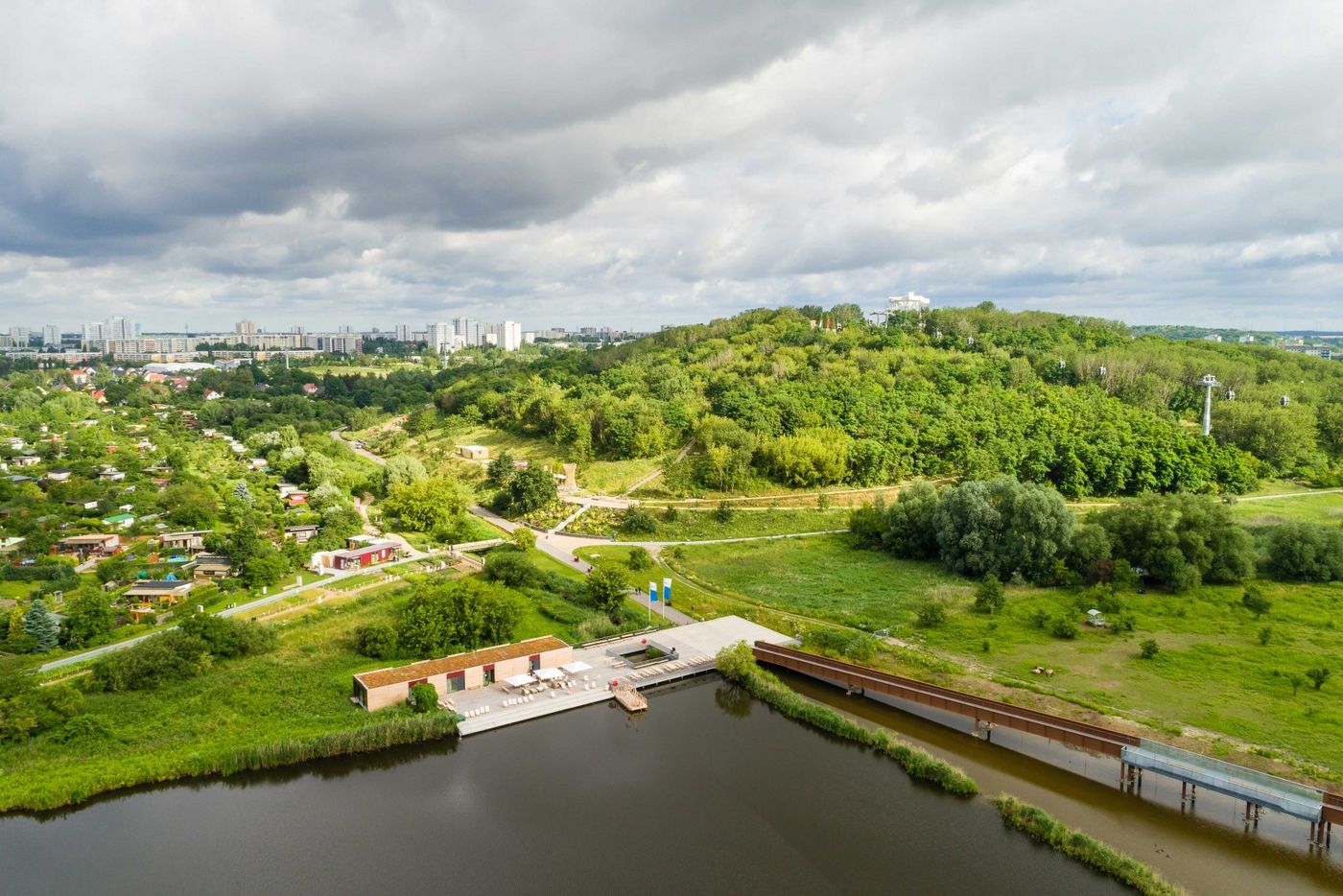
© Nikolai Benner
Kienberg
The Kienberg rises in the centre of Kienberg Park. This originally natural elevation – a glacial hill – was artificially filled up until it had almost doubled in size between 1946 and 1984.

© Grün Berlin
Wuhletal
The area with its partly newly created shallow water zones is a natural area to be consciously protected, in which the animal and plant world can develop magnificently.
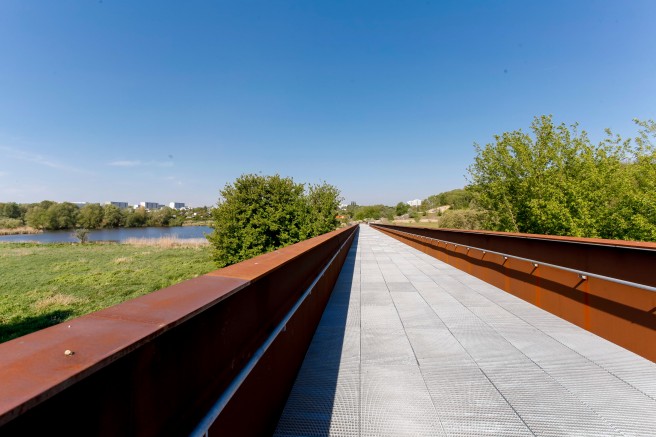
© Lichtschwärmer
Wuhlesteg
The new pedestrian walkway connects the districts of Marzahn and Hellersdorf. Along the approximately 280-metre-long path, unique views of vegetation and fauna worthy of protection with a great wealth of species are offered.
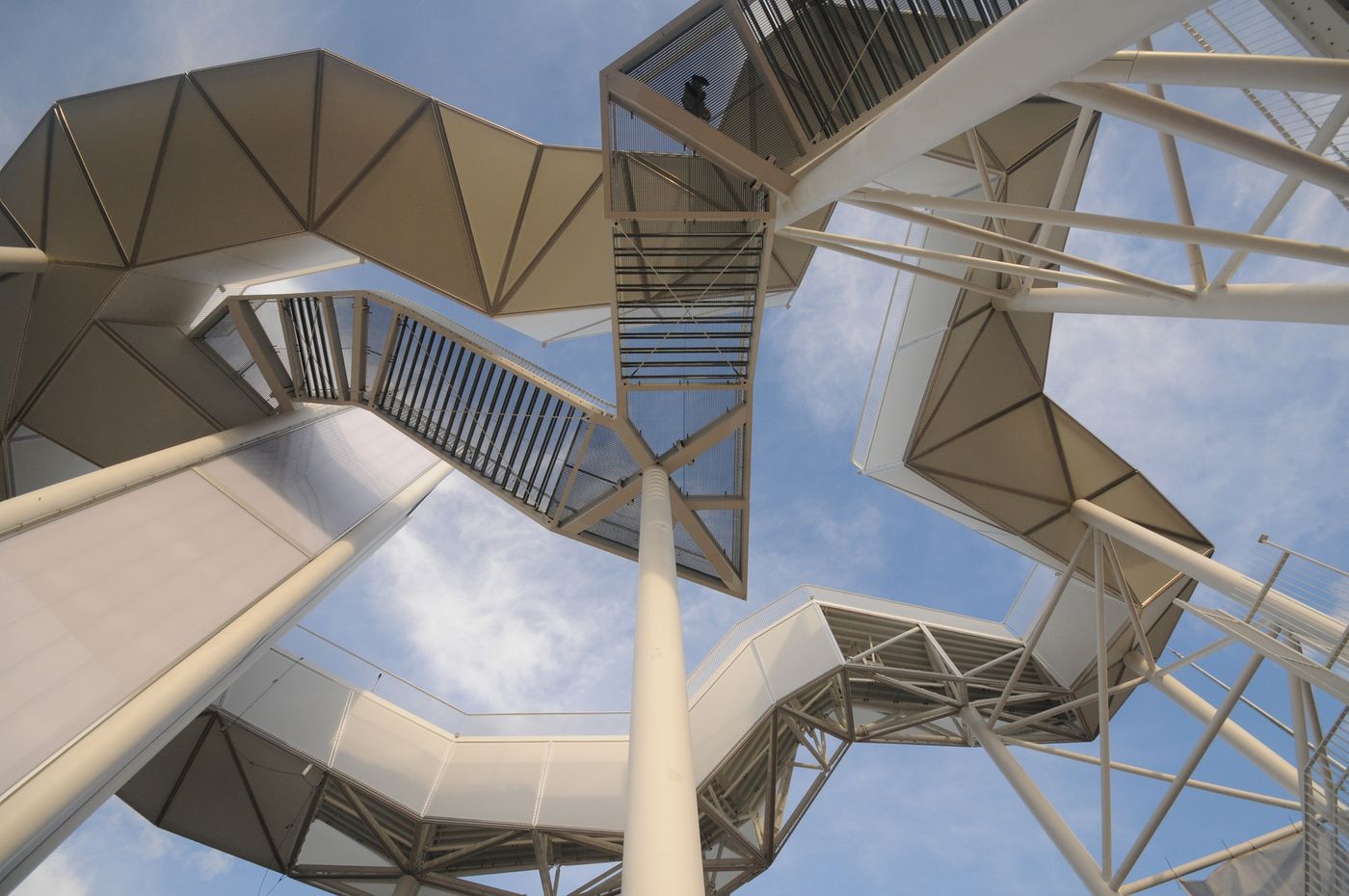
© Thomas Uhlemann
Wolkenhain
The new viewing structure is enthroned like a cloud above the treetops of the Kienberg. The "Wolkenhain" is not only a landmark of Kienberg Park visible from afar, but also one of the highlights of Kienberg Park with its impressive views.
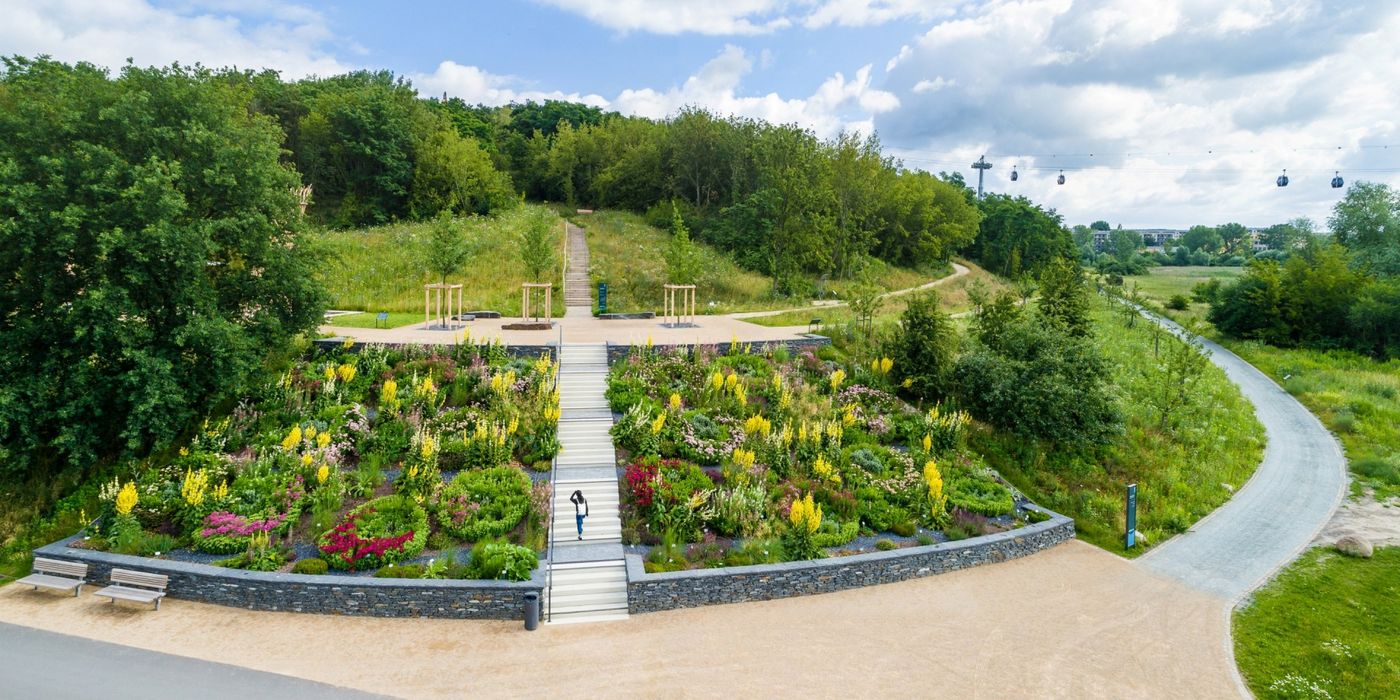
© Nikolai Benner
Kienberg terraces
At the foot of the sunny southern slope of the Kienberg, the Kienberg Promenade extends and leads past orchard meadows, open meadow areas and natural stone walls of the Kienberg terraces.
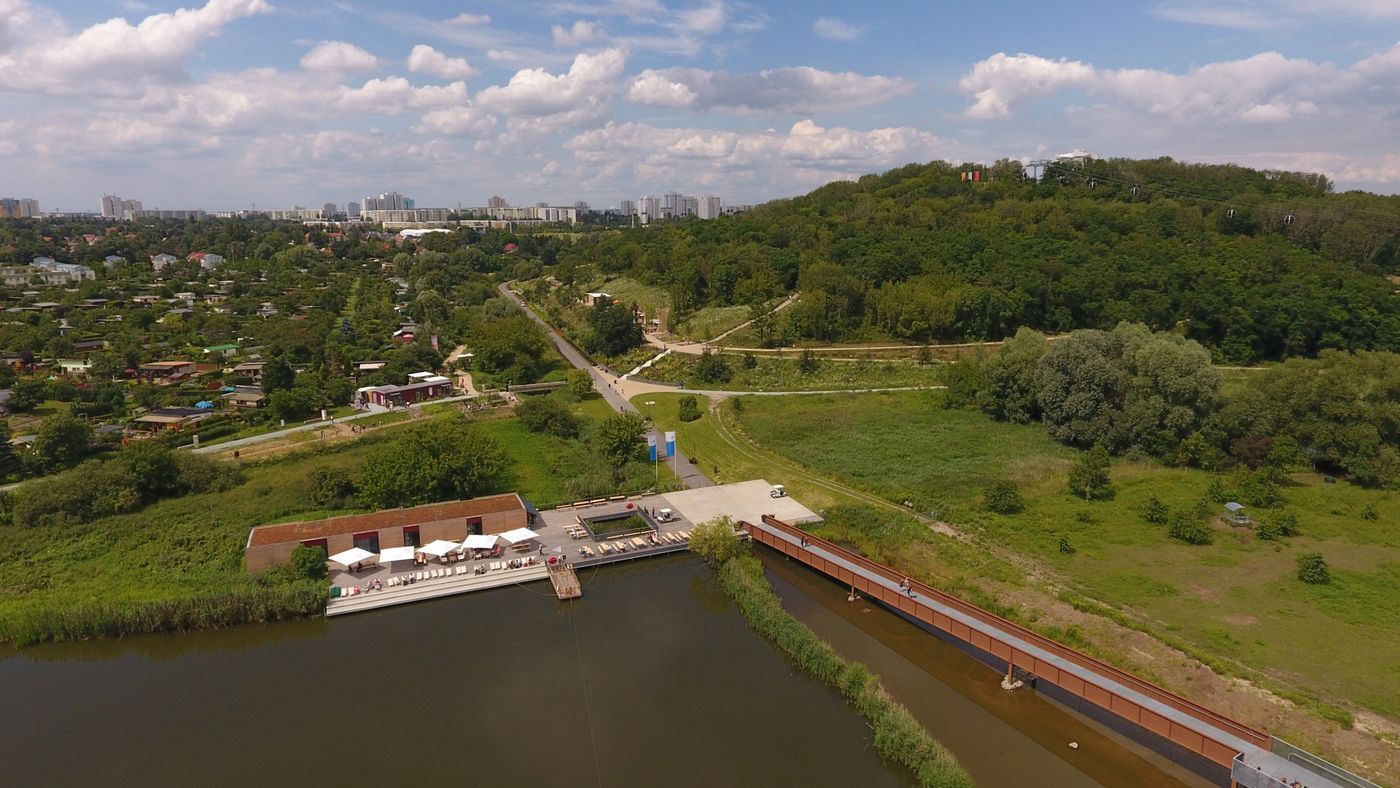
© Drone Your Life
Square by the lake with environmental education centre
A 20-metre wide and 60-metre long platform made of larch wood marks the Platz am See at the end of the Wuhlesteg.
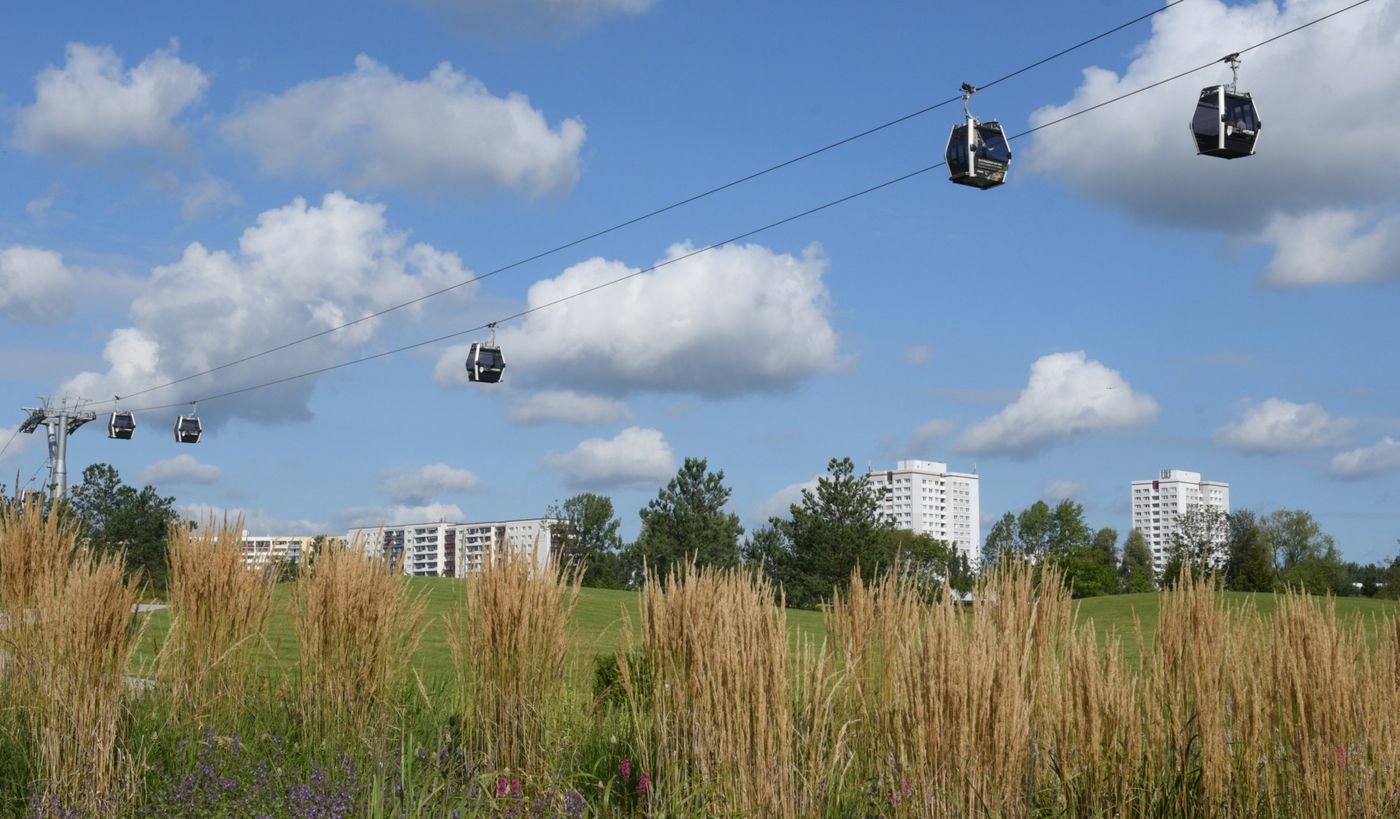
© Thomas Uhlemann
Ropeway
The ride gives visitors a wonderful view of the grounds of Kienberg Park and the Gärten der Welt with its many horticultural and architectural attractions.

© Thomas Uhlemann
Tälchenbrücke
From the Marzahn lookout, a small hill, the Tälchenbrücke creates a connection to the northern slope of the Kienberg. Walking across the bridge also becomes a special sound experience for guests.
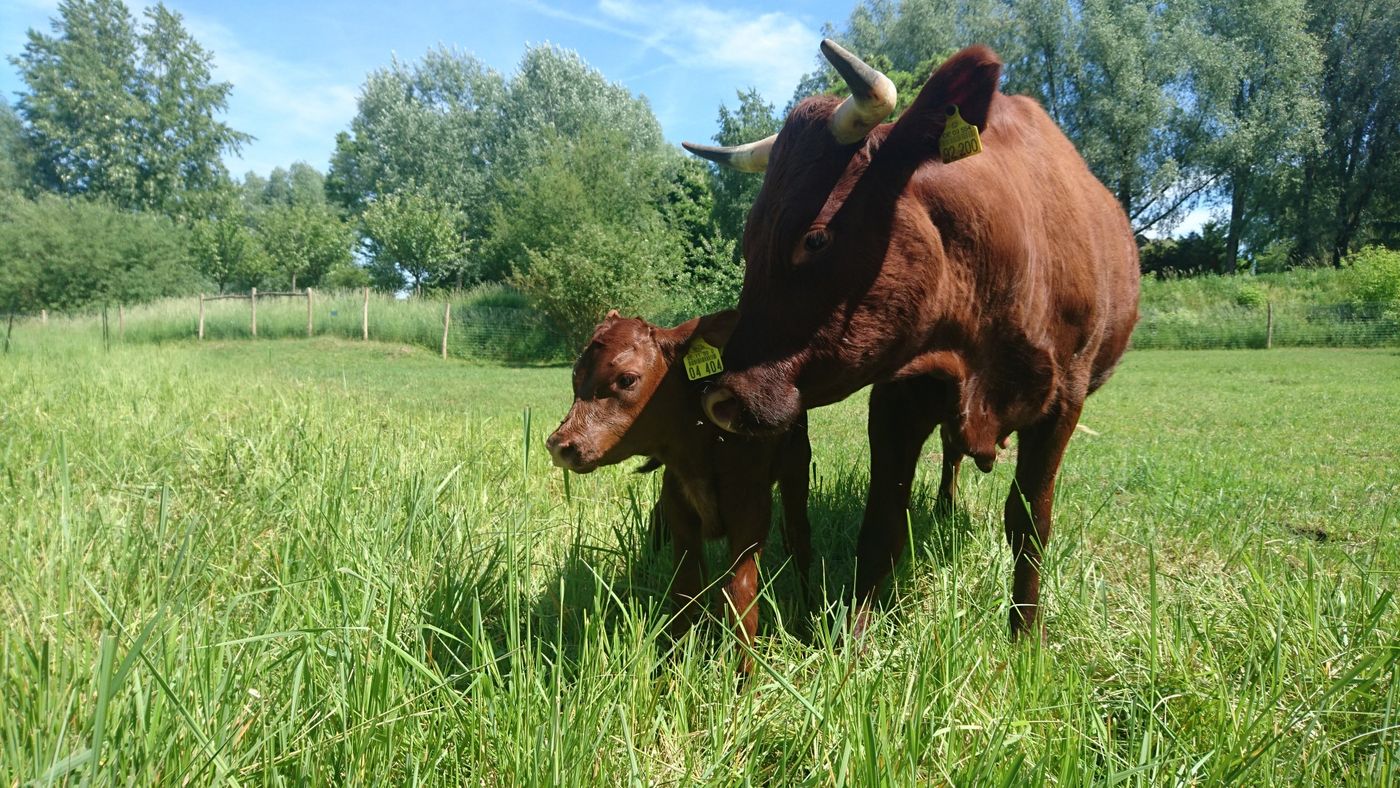
© Grün Berlin
"Ark Park" grazing areas
This project has created a refuge for native domestic animal breeds threatened with extinction. The "Ark Park" facilitates a positive interaction between grazing, landscape and plant development.
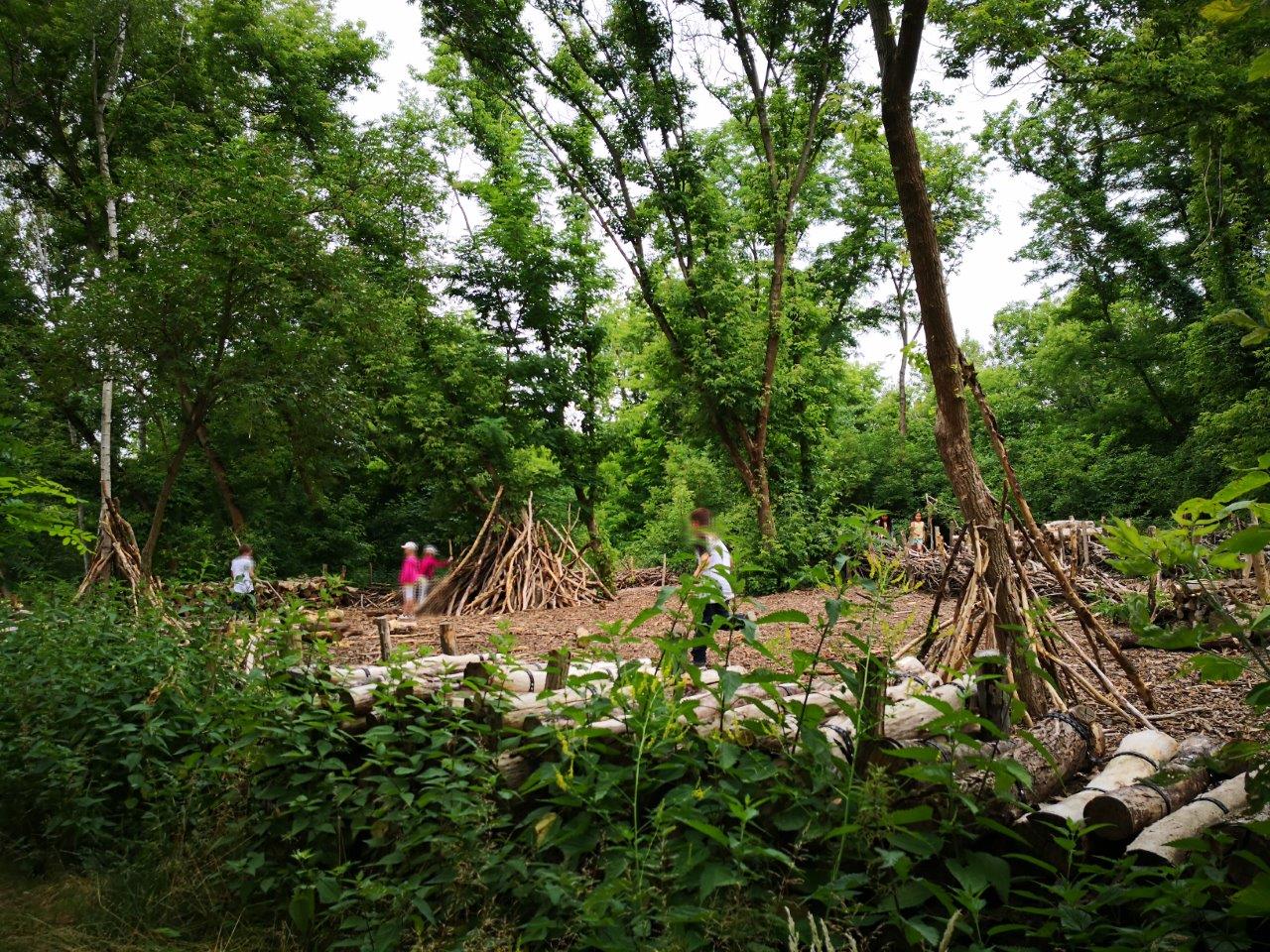
© Leonie Rhode
Natural experience realm
With the natural experience realm (NER), a large "wild" open space has been created on the Kienberg for children and young people to romp and play in, which they can visit independently and use without any guidelines.

© Thomas Uhlemann
Jelena-Santic-Friedenspark
The Jelena-Santic-Friedenspark on the Wuhle is part of an overarching Wuhle greenbelt that stretches from Ahrensfelde to Köpenick.
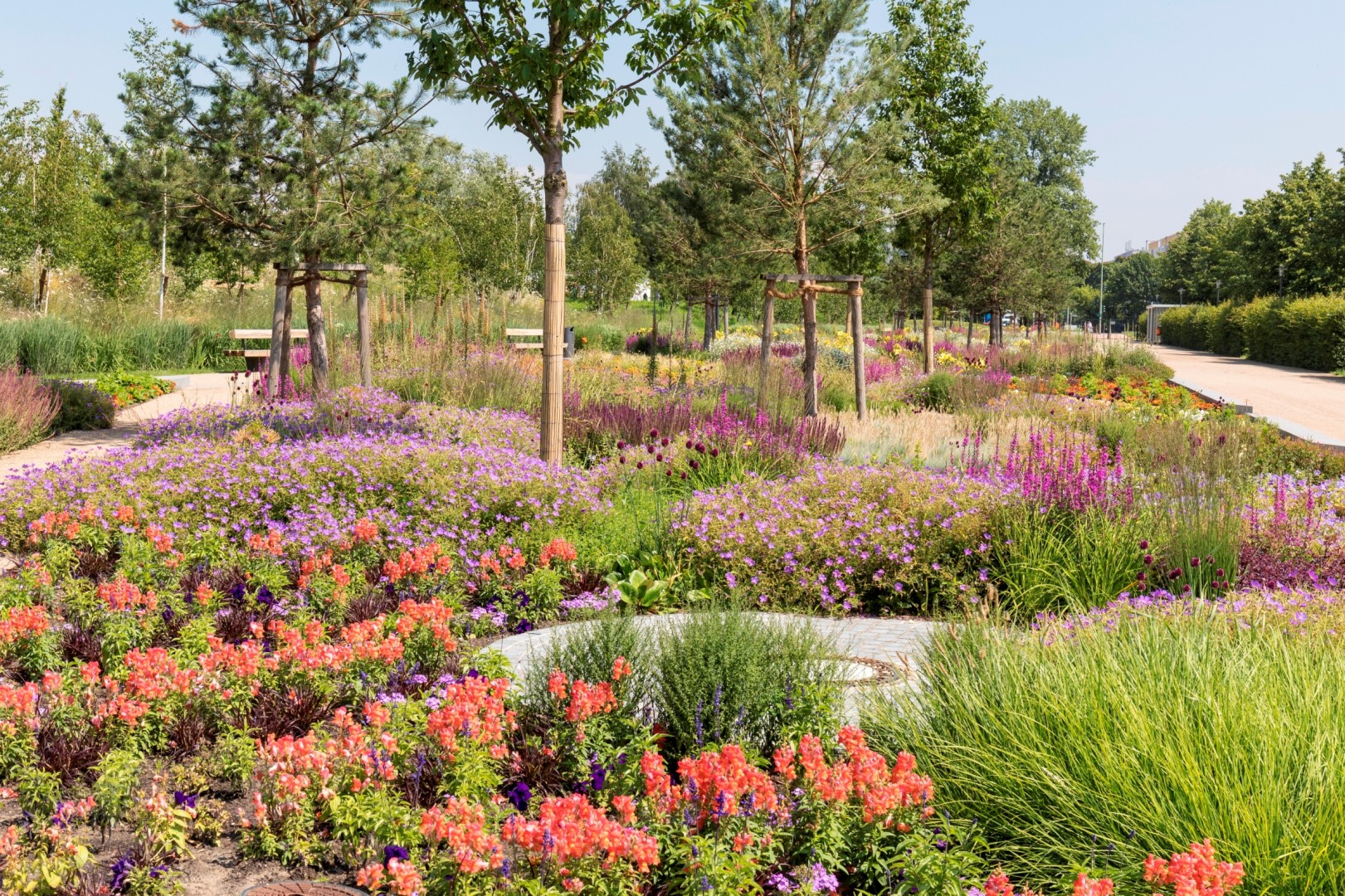
© Frank Sperling
Märkischer Garten
A richly contrasting colourful display of summer flowers, grasses, perennials and ferns in yellow, orange and red greets visitors as they approach the valley station at the entrance to Kienberg Park.
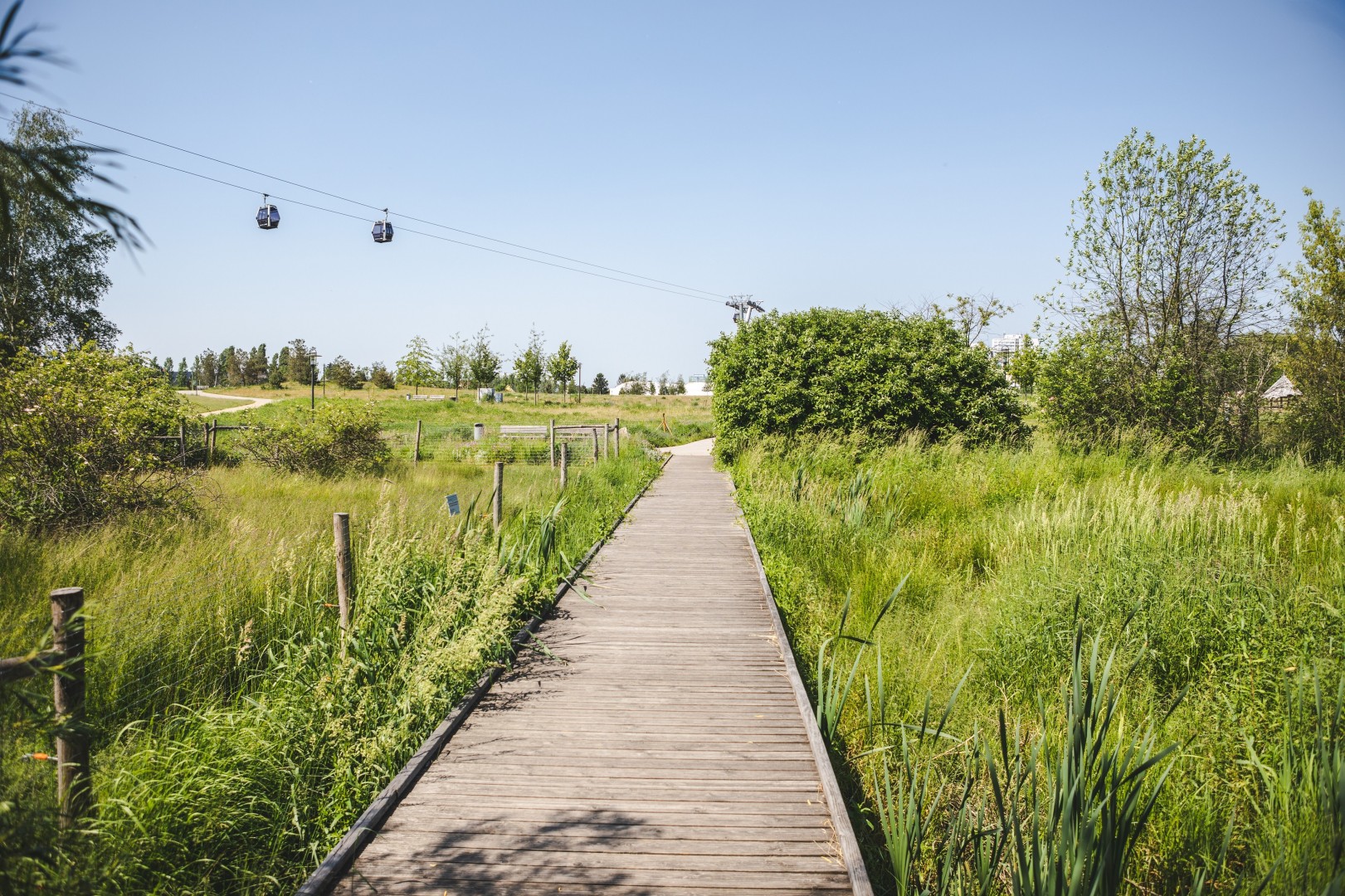
© Konstantin Börner
Maintenance and development plan
With an extensive maintenance and development plan, the goals and measures for the individual landscape areas of Kienberg Park were individually devised and marked out, so that the care and ecological development of the Kienberg and the Wuhletal are also ensured after the IGA Berlin 2017.